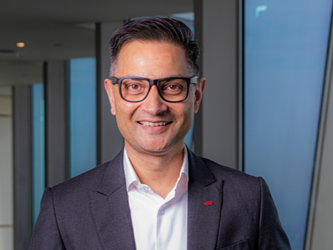Interview with Yvonne Jewkes, MRS President’s Medal 2021 winner
On selecting the winner, president of MRS Jan Gooding said: “This was an incredibly challenging sector to influence. Yet Professor Jewkes translated her findings into progressive actions, changed people’s thinking and informed the architecture of hope.”
This interview was first published Research Live Industry Report 2022.
You describe how design can help transform prison from being a place of punishment to a ‘healing environment – what does that mean?
Despite all the damning research evidence of the harm prison does to some of society’s most vulnerable members, there remains a pervasive assumption that prisons must feel like places of hardship and deprivation. Throughout my career, I’ve championed Maggie’s Cancer Care Centres and encouraged prison architects to reflect on the values they incorporate which are summed up by their co-founder, Charles Jencks, as the ‘architecture of hope’. We owe it to victims of crime, and potential future victims, to do more than simply warehouse prisoners. Nearly all the people currently in prison will be released into society.
I always say to doubters, who would you rather have living next door to you? Someone who has been treated with decency in an environment that has helped to heal them and instilled hope for their future? Or someone who has effectively been caged and brutalised for many years?
What evidence exists for the positive impact of prison design on rehabilitation?
My research has found numerous examples of positive impacts of prison design, but another way ofconceptualising it is to look at reoffending rates. In the UK nearly 50% of people who have been to prison go on to reoffend (and in some prisons, it’s as high as 75–80%). In, for example, Norway, which is recognised internationally for the imaginative, humane architecture of prisons such as Halden, recidivism is 22–25%.
How receptive are prisoners and prison staff to being interviewed? What key qualities make for a great prison researcher?
Most prisoners are receptive because they like to take part in research – and it’s a break in the routine, a different face, someone who’s interested in them and their stories. Staff are often under time pressure but they usually find it an enjoyable experience. Key qualities – patience, empathy, humanity.
You've written about the value of communicating emotion in prison research – does it risk looking less scientific as a result, especially in this age of big data?
My research isn’t about ‘science’ or ‘big data’. It’s about human beings trying to survive in difficult circumstances and soul-deadening environments. Writing about the emotional texture of any research inquiry requires nuanced thinking and careful writing, but it’s impossible to ignore that the themes underpinning my work – authority, power, guilt, injustice, violence, pain, anger, sadness and shame – deal with emotions in their starkest form, and I see it as my role to represent these aspects of life in confinement.
Does good design cost more – is this a real barrier or a perceived one?
Good design need cost no more than bad design.
Can you give a particular example of an insight emanating from your research that has helped change previously intractable opinion regarding prison reform?
When I first presented my research to the UK Ministry of Justice, we had conversations about bars on windows. I was told that, while horizontal bars (permitting a better view) could be used on cell windows for women and children, it was important that vertical bars be used in men’s prisons to signify punishment. I presented research evidence that showed the psychological and health benefits of views of green spaces, and this has driven a sea change in high-level thinking. The new prisons currently being built in this country will not have bars on the windows at all for the first time in English penal history.
Some years ago, you described this period as a once in a lifetime opportunity to replace decaying prisons around the world with prisons designed for rehabilitation. Is this happening?
Certainly not in England and Wales. We are heading in the wrong direction, building more and bigger prisons to hold ever greater numbers of people, many of whom could be more effectively dealt with outside the criminal justice system. Some of our neighbours are doing better. For example, Scotland abandoned plans to build a 300-bed women’s prison (a large prison in the context of a female inmate population of 400 ) in favour of a 50-bed national facility and five 20-bed regional units.
What professional achievement are you most proud of?
My involvement in the new women’s prison in Limerick, Ireland. I’m hopeful that, when it opens in summer 2022, it will rival the best of Scandinavian facilities in being a beautiful, calm, creative place in which women can take control of their lives and build better futures. The current Limerick prison was described in a 2003 inspectorate report as deplorable.
I was brought onto the project for its replacement at a time when the Irish Prison Service (IPS) had already started to draft plans for the new facility – a prison with a ‘soft’ edge but primarily a prison that had no architectural empathy with prisoners. I encouraged them to be bigger and bolder in their ideas, to imagine what an architecture of hope might look like for women in Irish prisons. I persuaded IPS to hold a design competition, as was more common in parts of northern Europe. The winning design, by PJ Hegarty, is a radical departure and, unusually, was the second most expensive submission, underlining that design innovation, not cost, was prioritised.
IPS’s commitment indicates that Limerick is not simply a one-off experiment, but that through deep engagement with my research over an extended period, the IPS has come to view prisons as potentially transformative environments that can have positive impacts on the lives and futures of traumatised and criminalised women. You can read more about it and see a three-minute video showing my input into the design of the new prison here.
What are your favourite examples of architecture from outside the penal system?
I love Art Deco buildings, whether houses, cinemas, factories like the Hoover Building in Ealing, London, or hospitals like the sanatorium in Paimio, Finland, designed by Alvar Aalto which had ocean liner glamour and was a Gesamtkunstwerk – a total work of art. Every detail from door handles to lighting to furniture was imagined and designed by Aalto and custom made to maximise patients’ comfort and emotional wellbeing.
What’s your dream project to work on?
Limerick was a dream job because of the generosity and faith IPS showed in me. But what I’d really like to see is: a radical reduction in prisoner numbers (most prison populations could be halved with no detrimental impact on crime rates); closure of ageing prisons that are no longer fit-for-purpose; and a halt on current building programmes that will warehouse people in prisons built to the same design as their 19th century predecessors. Then I’d like to be involved in the design of a small number of humane, progressive establishments, with an emphasis on meaningful work, training and education, as well as opportunities for arts and creative pursuits.
I’ve just written a piece advocating the introduction of feminist values into the women’s prison estate. I’d love to work on that project.

We hope you enjoyed this article.
Research Live is published by MRS.
The Market Research Society (MRS) exists to promote and protect the research sector, showcasing how research delivers impact for businesses and government.
Members of MRS enjoy many benefits including tailoured policy guidance, discounts on training and conferences, and access to member-only content.
For example, there's an archive of winning case studies from over a decade of MRS Awards.
Find out more about the benefits of joining MRS here.













0 Comments